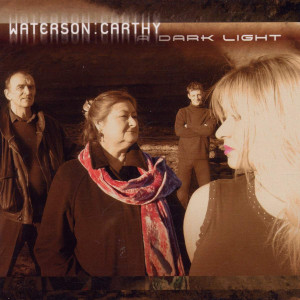 This review was contributed by Judith Gennett.
This review was contributed by Judith Gennett.
Norma Waterson and her spouse Martin Carthy have extensive musical histories extending into the dim murky past of the English folk revival. One’s head could explode just thinking of it all: the a capella Yorkshire Waterson family, The Albion Band, Brass Monkey, Carthy and Swarbrick. You can read about this history in the GMR review of the 1999 Waterson:Carthy album Broken Ground. Here is another album from the folks at the official top of the UK folk heap!
In its current form Waterson:Carthy is Norma and Martin and their daughter, fiddler Eliza Carthy, as well as accordionist Tim Van Eyken. The theory of the Dark Light album is to present material relating to “people who had a profound effect on…us in some stage of our musical lives.” As this is an unconscious phenomenon in many albums, you may not catch this unless you read the booklet or are exceptionally observant. Inspirations range from source singers Fred Jordan and Sam Larner, to collector Cecil Sharp, to revivalist A.L. Loyd.
You would think that after all these albums, the little extended family would get boring, rest on their laurels, but actually Dark Light is quite fresh-sounding, a nice album with subtly interesting interpretations of the old songs. Martin Carthy’s old songs sound much as they did on the old LPs. Scholars will hear “The Devil and the Feathery Wife” from Martin’s album Out Of the Cut in A Dark Light‘s “The Devil and the Farmer.” The song is deceptively simple, accompanied by fiddle and box; and here is a great place to note that Eliza Carthy’s fiddle seems dryer than Dave Swarbrick’s has in the past.
Three tracks stand out as most striking. “The Old Churchyard” is the American song, a hymn learnt from Arkansas singer Almeda Riddle. The harmony is closer to unison than I am used to in Sacred Harp, and certainly darker and more strident with no soprano singer.
“The Crystal Spring” is an Eliza Carthy extravaganza, accompanied by melodeon and fiddle, two sweet female vocals slightly out of cadence and the instruments as well, making for a wicked but pleasant interpretation. Finally, “Death And the Lady” is from the Cecil Sharp collection. Norma Waterson tinkered with the tune by “altering just a couple of notes,” arriving at a very macabre chantlike song, made scarier by melody hugging guitar accompaniment from guest Martin Simpson. Perhaps these songs are the “Dark” of A Dark Light.
All the tracks are traditional, whatever the Waterson tweaking. Most versions are relatively standard, though often possessing an arcane modal rhythmic tilt, and of course very well performed; luckily traditional music has been weeded out for listenability over time. Also included is a partially instrumental set, “Balancy Straw+Seventeen Come Sunday+Whitfriars Hornpipe.” It’s a chance to hear Van Eycken sing, and to hear some peppy dance music from real pros, though Martin will perhaps seem to take the rhythm part on guitar. The album ends with a special tribute to the Copper Family.
(Topic, 2002)
